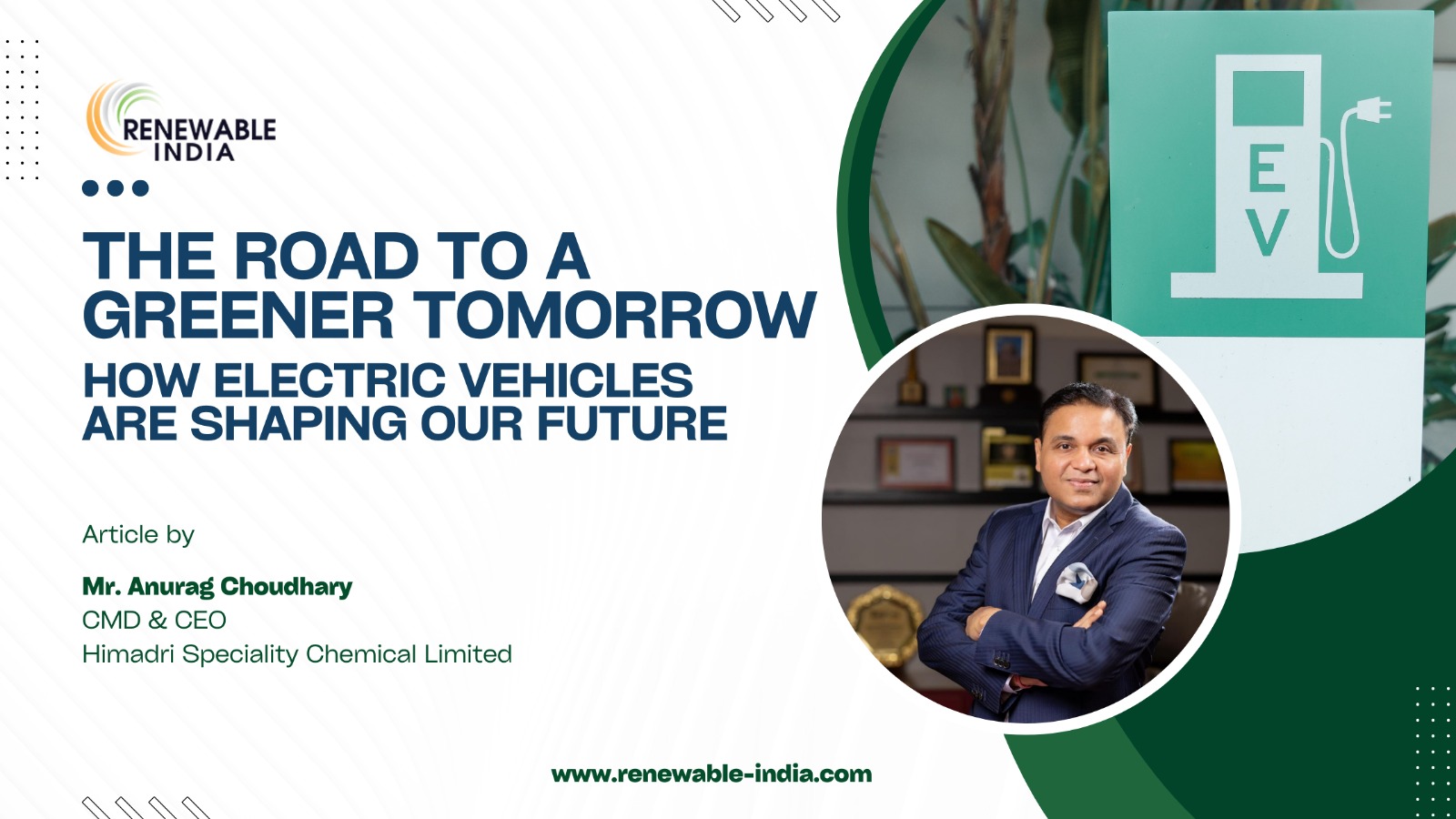
Heraclitus’ timeless quote, “Change is the only constant,” perfectly encapsulates the ongoing global shift towards electric mobility. As nearly every major car manufacturer invests heavily in electric vehicle (EV) technology, the push towards cleaner mobility has reached unprecedented levels. Since its inception in 2020, World EV Day has provided a global stage to raise awareness about the benefits of EVs and to expedite the shift towards sustainable transport.
At Himadri, we take pride in leading this revolution in India, pioneering the development of advanced electric vehicle battery materials that drive the shift towards cleaner, greener transportation.
The electric vehicle (EV) landscape has seen remarkable changes over the past decade. Globally, the automotive market is projected to reach $6.86 trillion by 2033, growing at a compound annual growth rate (CAGR) of 6.77%. In India, EV sales surged to 1.5 million units in 2023, marking a 50% increase from the previous year, with two-wheelers dominating the market and accounting for 85-90% of sales. The cost gap between electric and internal combustion engine vehicles (ICEVs) is narrowing due to advancements in battery technology, economies of scale, and supportive government policies. EVs also offer significant cost savings in fuel and maintenance, as they run at about one-eighth the cost of small petrol cars and have just 1% of the moving parts compared to ICEVs. Additionally, government incentives such as tax credits, rebates, and reduced registration fees are further driving the adoption of EVs.
Transitioning from ICE vehicles to EVs represents more than an economic shift—it is a pivotal move towards addressing climate change and reducing environmental pollution. India’s Ministry of Road Transport and Highways announced an ambitious target of EV30@30 – 30% of newly registered private cars, 40% of buses, 70% of commercial cars, and 80% of 2-wheelers and 3-wheelers targeted to be electric by 2030. EVs produce zero tailpipe emissions, which significantly curtails greenhouse gases and air pollutants that contribute to global warming and health issues.
EVs convert a higher percentage of battery energy into vehicle power compared to ICE engines, which lose much of their energy as heat. Additionally, EVs can be powered by renewable sources like solar and wind.
Our dedication to advancing battery technology is complemented by a strong commitment to sustainable practices. We are dedicated to fostering a circular economy through our operations.
This approach focuses on reusing, refurbishing, and recycling products and materials to minimize waste, fresh critical minerals and environmental impact evident in both our legacy and our new energy material business.
We are actively developing efficient battery recycling processes to recover valuable materials such as lithium, cobalt, and nickel. This not only reduces the need for new raw materials but also minimizes environmental harm. Additionally, we are exploring the repurposing of used EV batteries for energy storage solutions, giving a second life to batteries that are no longer suitable for vehicles but still possess significant capacity. Our energy-efficient and environmentally friendly manufacturing processes, showcased by our eight zero-discharge facilities across India, reflect our commitment to sustainability.
Himadri has been at the forefront of the electric vehicle (EV) revolution through its New Energy Materials Division. This division has been instrumental in developing and supplying critical materials essential for the production of high-performance EV batteries. By focusing on research and innovation, Himadri has been able to create sustainable and cost-effective solutions that support the transition to a greener and cleaner future. Their contributions to the EV ecosystem have not only bolstered India’s position as a global EV hub but have also played a pivotal role in addressing environmental concerns and promoting energy independence.
Achieving a sustainable transition to electric mobility requires robust support from all stakeholders—governments, industries, and consumers alike. Governments must continue to provide incentives and develop essential infrastructure, such as charging stations. Industries need to invest in research and development to drive innovation and cost reductions. Consumers play a crucial role by adopting EVs and supporting sustainable practices.
It is imperative that sustainability be integrated throughout the entire value chain of EVs—from responsible sourcing of raw materials to ethical labour practices and minimizing environmental impact throughout the vehicle lifecycle. Only with a comprehensive commitment to sustainability can we ensure a successful and impactful transition to electric mobility.
As we forge ahead into the future, the rise of electric vehicles will be paramount in achieving global sustainability goals. A steadfast commitment to innovation will be required in championing the sustainable importance of E-Mobility in India and worldwide. With its strategic entry into the Lithium-ion Battery Ecosystem, Himadri envisions a future where our planet is quieter, cleaner, and more sustainable for generations to come.
Driving Innovation: The Role of EV Apps in Enhancing Vehicle Usability
Leave a Reply